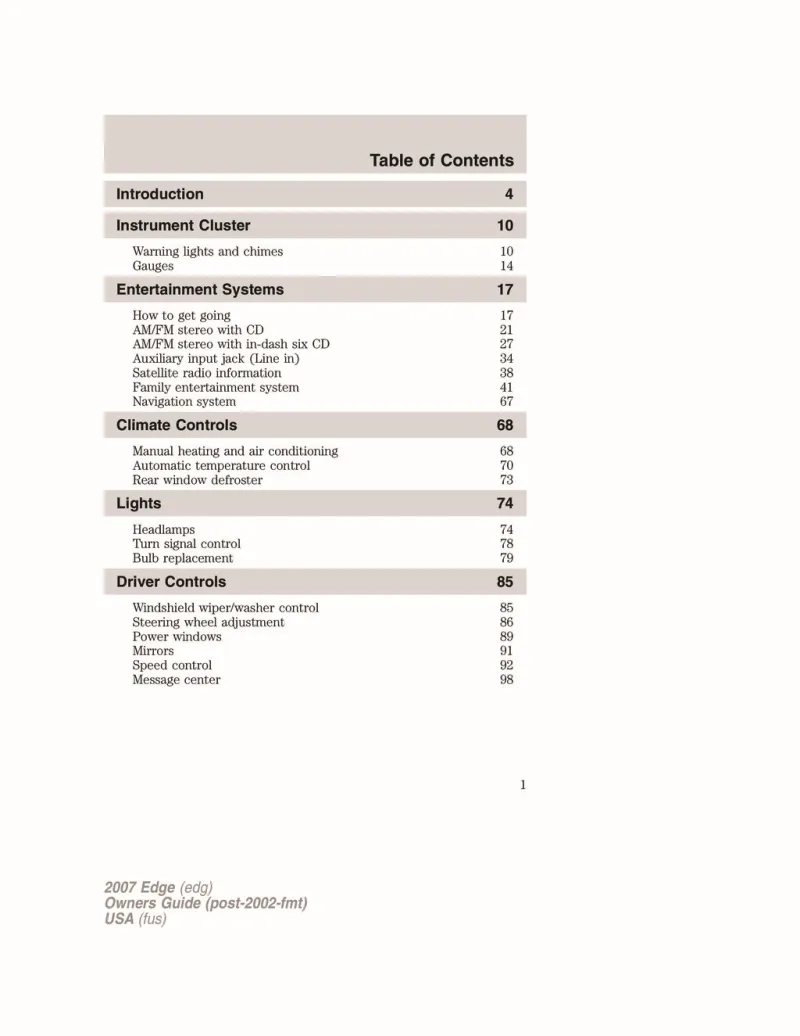2007 Ford Edge Owner's Manual

Table of Contents
2007 Ford Edge Overview
Introduction
The 2007 Ford Edge is a stylish and versatile midsize crossover SUV that seamlessly blends performance with practicality. Designed to accommodate families and individuals alike, the Edge offers ample interior space, advanced technology, and a comfortable ride, establishing itself as a popular choice in the competitive market of crossovers. Its sleek exterior and modern design give it a distinctive presence on the road, making it an appealing option for those seeking both form and function.
Powertrains
The 2007 Ford Edge is powered by a robust 3.5-liter V6 engine, producing a lively 265 horsepower and 250 lb-ft of torque. This capable powertrain is paired with a six-speed automatic transmission, delivering smooth shifts and responsive acceleration. Available in both front-wheel drive and all-wheel drive configurations, the Edge caters to various driving preferences, ensuring drivers can tackle varying road conditions with confidence.
Trims
The 2007 Edge is offered in three well-appointed trims: SE, SEL, and Limited. The SE trim sets a solid foundation with standard features like air conditioning, keyless entry, and a four-speaker audio system. The SEL adds a touch of luxury with upgraded upholstery, additional convenience features, and optional navigation. For those seeking the ultimate in luxury and technology, the Limited trim includes premium leather seating, a premium sound system, and advanced safety features.
Features
The Edge is equipped with a variety of technology and comfort features, such as available heated front seats, a panoramic sunroof, and state-of-the-art infotainment systems, depending on the trim. Safety is prioritized with standard features including front airbags, anti-lock brakes, and available rear parking sensors. The spacious interior boasts generous legroom and cargo space, making it an ideal choice for family road trips and weekend adventures.
Owners Manual
The 2007 Ford Edge comes with a comprehensive owner's manual that provides essential information on vehicle operation, maintenance guidelines, and troubleshooting tips. The manual serves as a valuable resource for owners, ensuring they can make the most of their Edge's features while promoting longevity and optimal performance. It offers guidance on everything from routine maintenance schedules to advanced technological functionalities, enhancing the owner's overall experience.
User manual download
The Ford Edge owner manual for the 2007 model year is to be found in PDF downloadable format on this page. The owner manual for the model year 2007 is free and in English, but the repair manuals are usually not easy to get and may cost more.
Manual Questions
Fill the form below and someone will help you!

